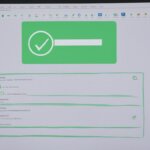Table of Contents
Smoke testing, also known as build verification testing or confidence testing, is a preliminary check in software development to determine if a new software build is ready for the next testing phase. It focuses on determining if the most crucial functions of a program work but does not delve into finer details. Smoke testing is a valuable part of the testing process as it helps in identifying basic and critical issues before more in-depth testing is conducted. It is a simple but effective strategy to improve software code and ensure that a build is stable.
Smoke testing is a crucial step in the software development process. By conducting smoke tests, developers and QA teams can gain confidence in the stability and functionality of a new software build. It helps in identifying basic and critical issues before more extensive testing is done, saving time and resources. Smoke testing involves testing the most important functionalities of the software to ensure that it functions as intended.
In the following sections, we will delve deeper into what smoke testing is, the different types of smoke testing, how smoke testing works and how to perform it, the advantages and disadvantages of smoke testing, and examples of smoke testing in action. Whether you are a software developer, QA tester, or simply interested in the software development process, understanding smoke testing is essential to ensure the quality and stability of software builds.
What is Smoke Testing?
Smoke testing is a software testing method used to determine if a new software build is ready for further testing. It plays a crucial role in identifying basic and critical issues in an application before more in-depth testing is conducted. The goal of smoke testing is to uncover simple yet severe failures in software functionality, ensuring that the most important features are working as expected.
Smoke testing is typically performed by QA teams using a minimal set of tests on each build. These tests cover the core functionalities of the software, focusing on the essential aspects that need to be validated. By conducting smoke tests, QA teams can quickly identify any major flaws or issues that may hinder the software’s stability and performance.
By employing smoke testing, software development teams can catch and address critical issues early in the development process, reducing the risk of encountering major setbacks later on. It serves as an efficient and effective strategy to improve software functionality, providing confidence in the stability of the build.
During smoke testing, various scenarios are tested to ensure that the software functions as intended. This includes testing the most crucial aspects, such as login functionality, data entry, and navigation within the application. By focusing on these fundamental features, smoke tests can swiftly identify any significant issues, allowing developers to rectify them in a timely manner.
To gain a better understanding of smoke testing, here is an example of a smoke test scenario:
- Open the application
- Verify that the login screen is displayed
- Enter valid credentials and attempt to log in
- Confirm that the application transitions to the user dashboard
- Perform basic actions within the application, such as creating and saving a new entry
- Validate that the changes are successfully saved
By following this scenario, testers can quickly determine if the core functionalities of the software are working as intended. If any critical issues arise, the development team can address them promptly to ensure a stable build for further testing.
Different Types of Smoke Testing
There are different types of smoke testing in software development, each with its own approach and benefits. These types include manual smoke testing, automated smoke testing, and hybrid smoke testing.
Manual Smoke Testing
Manual smoke testing is performed by human software testers who conduct the tests manually, taking a hands-on approach to identify any issues or defects. Testers develop and update test cases and write test scripts to simulate different scenarios and interactions within the software.
Automated Smoke Testing
Automated smoke testing involves the use of software tools to automate the testing process. Test cases and scripts are created and executed by the tools, making the testing process more efficient and less time-consuming. This type of testing is especially useful for repetitive or complex test cases that can be automated for consistent results.
Hybrid Smoke Testing
Hybrid smoke testing combines elements of both manual and automated testing approaches. Testers initially write test cases manually, taking into account the critical functionalities of the software. Once the test cases are defined, they can be automated using testing tools for faster and more accurate execution.
Did you know? Manual smoke testing allows testers to have greater control and customization, while automated smoke testing can significantly speed up the testing process.
Choosing the right type of smoke testing depends on various factors, such as the complexity of the software, the available resources, and the specific goals of the testing process. In some cases, a combination of manual and automated testing may be the most effective approach to ensure comprehensive test coverage and efficient testing cycles.
| Type of Smoke Testing | Description |
|---|---|
| Manual Smoke Testing | Conducted by human software testers manually |
| Automated Smoke Testing | Testing process automated using software tools |
| Hybrid Smoke Testing | Combination of manual and automated testing approaches |

How Smoke Testing Works and How to Perform a Smoke Test
After a new build is delivered by the developers, smoke testing is performed to determine if the software is ready for further testing. This crucial step can be done manually or automatically, depending on the testing approach chosen.
Manual Testing
In manual smoke testing, software testers execute the tests manually, following predefined testing scenarios and test suites. This approach allows for a more hands-on examination of the software’s functionality, providing valuable insights into its behavior.
Automated Testing
Automated smoke testing involves using preexisting scripts to perform the smoke test automatically. This approach saves time and effort, as the tests can be executed rapidly and consistently. It is particularly beneficial when dealing with large projects or frequent builds.
Hybrid Testing
Hybrid testing is a combination of manual and automated testing. Testers create testing scenarios and test suites manually and then automate the execution using suitable tools. This approach offers the advantages of both manual and automated testing, ensuring comprehensive coverage and efficiency.
Regardless of the chosen approach, the smoke test process involves several key steps:
- Create Testing Scenarios: Identify the critical functionalities and define the testing scenarios that need to be covered in the smoke test.
- Create Smoke Tests: Develop test cases specifically designed to validate the identified critical functionalities.
- Run and Record Tests: Execute the smoke tests and record the results, identifying any failures or errors encountered.
- Analyze Results: Evaluate the results to determine whether the smoke test passes or fails. If the smoke test fails, further investigation and debugging are required before proceeding with additional testing.
Performing a smoke test is a vital part of the software development process as it helps identify major flaws early on, allowing for prompt resolution. It provides a quick and initial assessment of the software build’s stability and functionality, serving as a valuable checkpoint before proceeding with more comprehensive testing.
Now that we understand how smoke testing works and how to perform a smoke test, let’s explore the advantages of smoke testing in the next section.
Advantages of Smoke Testing
Smoke testing offers several advantages in the software development process. Here are the key benefits:
1. Faster and More Frequent Testing
By automating smoke tests, software teams can run tests faster and more frequently, allowing for quick feedback on the stability of the software. This helps in identifying issues early on and ensures that the development process proceeds smoothly.
2. Bug-Free Software Construction
Smoke testing ensures that future builds are constructed on bug-free software. By catching basic and critical defects early in the development cycle, it helps in minimizing the number of bugs that make their way into subsequent builds, leading to more reliable and stable software.
3. Early Identification of Defects
One of the primary advantages of smoke testing is its ability to identify defects in the early stages of development. By focusing on essential functionalities, smoke tests help in uncovering critical issues before more comprehensive testing is carried out. This allows for prompt remediation and reduces the chances of defects escaping into later stages of development.
4. Reduction of Risks during Integration
Smoke testing plays a crucial role in reducing risks associated with adding code to existing build integrations. By verifying the stability and functionality of individual builds before integration, it minimizes the chances of introducing new bugs or breaking existing functionalities. This promotes seamless integration and overall system reliability.
5. Low Resource Requirements
Smoke tests have low resource requirements, making them highly efficient and cost-effective. They can be executed frequently without requiring significant time, effort, or specialized infrastructure. This allows software teams to incorporate smoke testing into their regular development workflow, ensuring continuous quality assurance.
6. Flexibility in Implementation
Smoke testing can be implemented using manual, automated, or hybrid approaches, providing flexibility to software teams based on their specific needs and resources. Manual smoke testing allows for human validation and adaptability, while automated smoke testing enhances efficiency and repeatability. Hybrid smoke testing combines the benefits of both approaches, offering the best of both worlds.
7. Early Verification of Software Quality
By verifying software quality early on in the development process, smoke testing ensures the creation of a stable build. It acts as an early indicator of overall system reliability and serves as a foundation for subsequent testing phases. This helps in fostering confidence in the software and aligning it with the desired quality standards.
In conclusion, smoke testing provides numerous advantages in the software development lifecycle, including faster testing, construction of bug-free software, early defect identification, risk reduction during integration, low resource requirements, flexibility in implementation, and early verification of software quality.
Disadvantages of Smoke Testing
While smoke testing offers several benefits, it’s important to consider its limitations and potential drawbacks. Understanding these disadvantages can help software development teams make informed decisions about when and how to implement smoke testing.
1. Limited Functionality Coverage
One of the main disadvantages of smoke testing is its limited coverage of software functionality. Smoke tests only focus on testing specified core functionalities, leaving other areas of the software unverified. This means that there is a possibility of critical bugs or issues being missed during the smoke testing process, potentially impacting the overall quality of the software.
2. Potential for Later Bugs
Despite the initial smoke test passing, there is still a potential for bugs or issues to arise later in the development process. Smoke testing is not exhaustive and cannot catch every possible bug or problem. Therefore, relying solely on smoke testing as the primary testing method may result in undetected issues later on, leading to more significant challenges and delays in the software development cycle.
3. Longer Testing Time for Manual Testing
Another disadvantage of smoke testing is the longer testing time required for manual testing. In larger projects, where more extensive test cases and scripts need to be written and updated, the manual smoke testing process can be time-consuming. This can lead to delays in delivering new builds and may hinder the overall efficiency of the software development process.
Despite these disadvantages, it is important to note that smoke testing still holds value in the software development lifecycle. By understanding its limitations, teams can complement smoke testing with other testing methodologies to ensure comprehensive testing coverage and deliver high-quality software.
Smoke Testing Cycle and Examples
In the software development process, the smoke testing cycle plays a crucial role in ensuring the stability and functionality of a build. It all begins with the delivery of a new build from the development team. Once received, smoke tests are conducted to assess the build’s reliability and performance.
If the smoke test reveals any failures, the build is then sent back to the development team for necessary fixes. On the other hand, if the smoke test passes, the build is integrated with existing builds in the QA and staging environment, making it ready for more comprehensive functional testing.
Smoke testing examples consist of various scenarios that validate important functionalities. For instance, in a web application, the login function can be tested to ensure users can securely access their accounts. In an e-shop, testing the addition of items to a cart verifies a smooth shopping experience. Similarly, the search function in an application can be subjected to smoke testing to confirm its effectiveness.
By incorporating the smoke testing cycle and employing relevant examples, software development teams can improve the overall quality and stability of their builds. This approach allows for early detection and mitigation of issues, resulting in a more robust and reliable software product.
FAQ
What is smoke testing in software development?
Smoke testing, also known as build verification testing or confidence testing, is a preliminary check in software development to determine if a new software build is ready for the next testing phase. It focuses on determining if the most crucial functions of a program work but does not delve into finer details.
What does smoke testing help in identifying?
Smoke testing helps in identifying basic and critical issues before more in-depth testing is conducted.
What is the goal of smoke testing?
The goal of smoke testing is to discover simple but severe failures using test cases that cover the most important functionalities of a software.
What are the different types of smoke testing?
The different types of smoke testing include manual smoke testing, automated smoke testing, and hybrid smoke testing.
What is manual smoke testing?
Manual smoke testing is conducted manually by human software testers. They develop and update test cases and write test scripts.
What is automated smoke testing?
Automated smoke testing involves the use of software tools to automate the testing process, making it more efficient.
What is hybrid smoke testing?
Hybrid smoke testing combines manual and automated testing. Testers write test cases and then automate the tests using a tool.
When is smoke testing performed?
Smoke testing is performed after a new build is delivered by the developers.
What happens if the smoke test fails?
If the smoke test fails, it indicates a major flaw and all further tests are halted.
What are the advantages of smoke testing?
Smoke testing offers several advantages, including faster and more frequent tests, bug-free software for future builds, early defect identification, risk reduction, low resource requirements, flexibility in implementation, and early verification of software quality.
What are the disadvantages of smoke testing?
The disadvantages of smoke testing include limited functionality coverage, potential for later bugs, and longer testing time for manual testing in larger projects.
How does the smoke testing cycle work?
The smoke testing cycle starts with the delivery of a build from the development team. Smoke tests are performed on the build to determine its stability and functionality.
What are some smoke testing examples?
Smoke testing examples include testing the login function of a web application, testing the addition of items to a cart in an e-shop, and testing the search function in an application.












